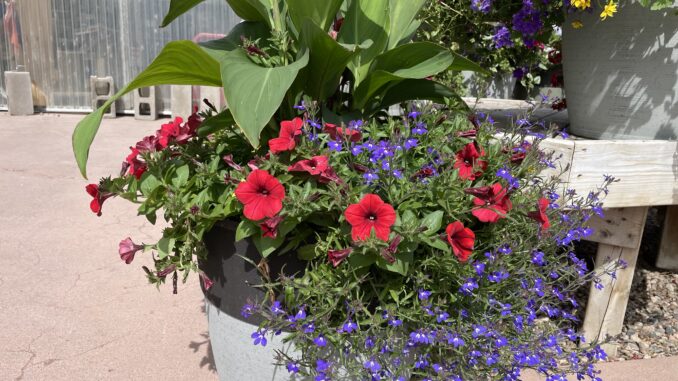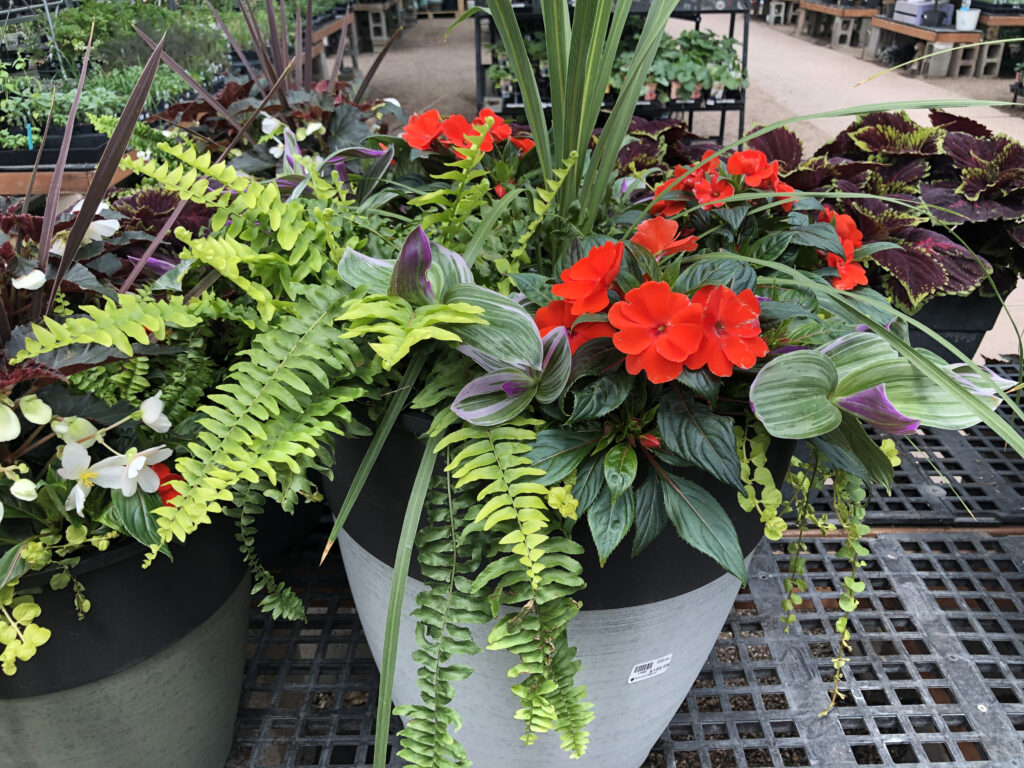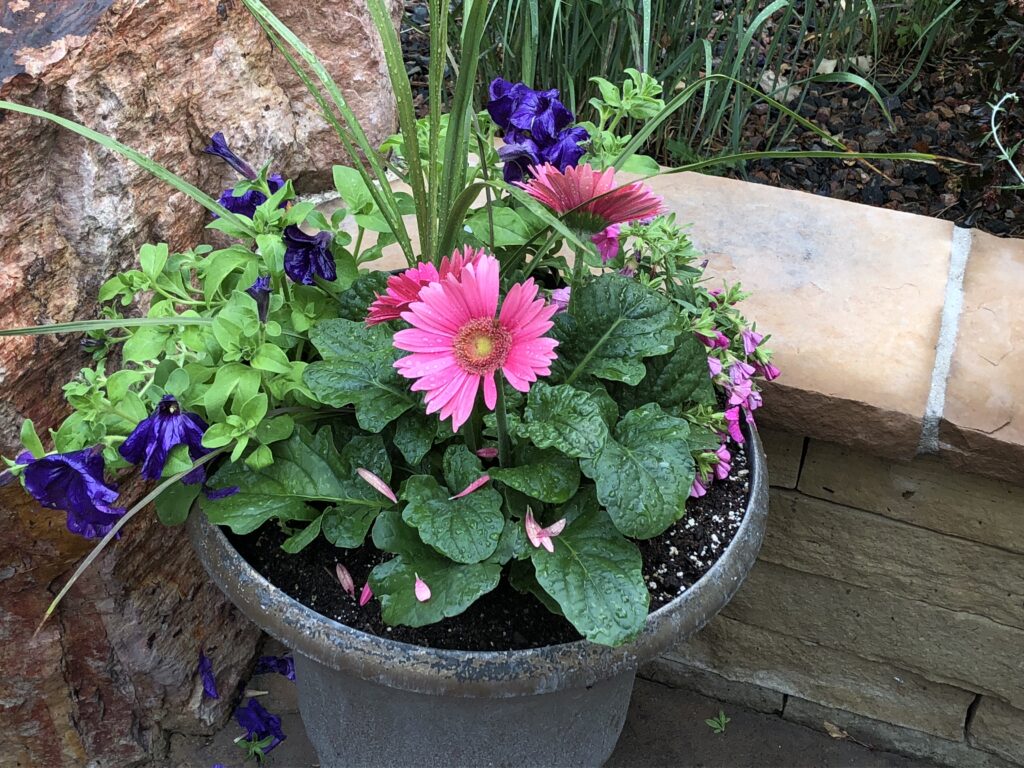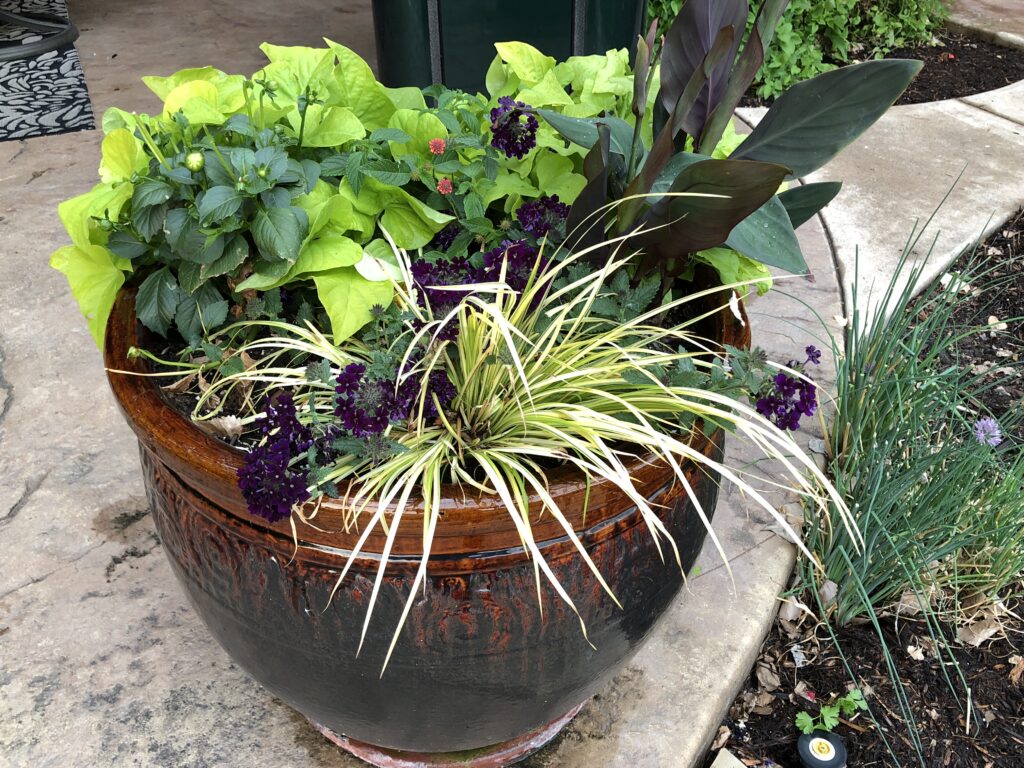
by Laurel Thompson
Annual flowers can transform any porch, patio, or storefront with bursts of color that dazzle all summer long. Some varieties trail and vine, making them great for hanging baskets, while others stand tall or bush out in patio pots. Here are some tips to make designing with annuals a breeze:

CONSIDER THE SUN
The first thing to consider is how much sun your pots and baskets will get outdoors. Six or more hours of direct sunlight is generally considered full sun (especially in the afternoon), and a few hours of morning light constitutes part sun. Areas that don’t get any direct light at all are considered full shade, though they still get bright indirect light.
Certain plants do better in full sun than shade, and vice versa, so it’s important to know how much light your annuals need before getting down to the design. Narrow down your options first, then choose your plants from there.

FILL—BUT DON’T CROWD
Annual arrangements should be full, but not crowded. In Northern Colorado, annuals typically last through September (the first frost is usually in early October), which gives them roughly four months to grow and fill their pots. When planting, make note of the spacing on each tag and leave room between the plants for them to fill in over the summer.

USE THRILLERS, FILLERS & SPILLERS
Different plants add texture and dimension to annual arrangements, and a combination of thrillers, fillers, and spillers can create the perfect tier. Patio pots typically utilize all three, while hanging baskets substitute the thriller for more fillers and/or spillers.
Thrillers add height to the arrangement and are usually planted in the middle of patio pots. Annual grasses, such as green and red cordyline, are a popular choice because they add height and contrast with bushier plant material (plus they do well in shady spots, part sun, and full sun). Canna lilies are another great thriller for sunny spots, and elephant ears do well in shady arrangements.
Fillers do exactly that: they fill in the arrangement, surrounding the filler but leaving room near the edge for spillers. Fillers are shorter than the thriller, ideally half as tall, and have a mounding or semi-trailing growth habit. Calibrachoa and petunias fill sunny pots nicely and come in a range of colors, whereas smaller flowers like verbena and lantana give the arrangement a more delicate look. Kong coleus have large, velvety leaves that add texture and color to shady pots, and showy flowers like begonias and impatiens can also be used.
The third and final step is to add spillers that cascade over the edges of the pot. Vining greenery is often used to contrast the filler blooms and cover the sides of the pot, creating a fuller, more natural look. Sweet potato vine does well in full sun and comes in green and burgundy to complement different color palettes; vinca vine and Creeping Jenny add various shades of green to pots in part sun and full shade.
Flowering vines also make great spillers, especially if the flowers are small and contrast with larger fillers like begonias. Consider bacopa for sunny spots and lobelia in pots for shade—or mix and match different annuals until you’ve found the perfect combination
Once you’ve designed and created your own annual masterpiece, don’t forget to water and fertilize regularly to keep your flowers looking their best all season long!
Support Northern Colorado Journalism
Show your support for North Forty News by helping us produce more content. It's a kind and simple gesture that will help us continue to bring more content to you.
BONUS - Donors get a link in their receipt to sign up for our once-per-week instant text messaging alert. Get your e-copy of North Forty News the moment it is released!
Click to Donate
